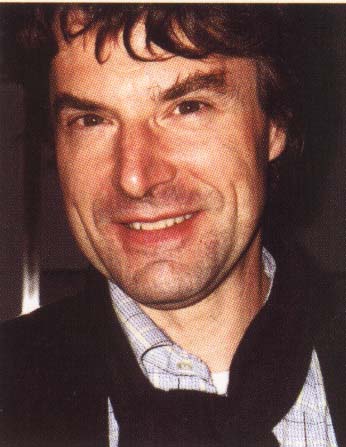“I appreciated the great subtlety of your playing in which extreme virtuosity remains discretely in the background behind the work you are interpreting. Bravo! What a beautiful instrument the guitar is!”
Claude Simon, Nobel Prize-winning author

Pierre Laniau has performed at the most important music festivals in France, for example in Montpellier and Lille , and in such renowned Paris concert halls as Salle Gaveau, Cirque d'hiver and Carré Sylvia Montfort. He has appeared as a soloist with a number of French and international orchestras (Lille, Marseilles, Toulouse, Versailles, Uppsala, Panama, Indonesia), and as a chamber musician has performed duets with singers Guillemette Laurens and Claire Geoffroy Decheaume, flutist Marc Beaucoudray and African guitarist Oyenga Adjalité. He has composed music for African dancer Elsa Wolliaston and filmmaker Françoise Etchegaray.
On French television, Pierre Laniau has been the featured guest of Frederic Mitterrand, Pierre Bouteiller, Jacques Martin and Philippe Meyer, among others, and on France-Musique radio, Anne-Charlotte Rémond devoted a 90 minute programme to him.
Pierre Laniau’s originality lies in his search for new material. He has extended his instrument’s repertoire both by turning to the past - playing baroque guitar (on an instrument made in 1652) and helping rediscover many unpublished baroque composers – and by reaching to the future, initiating the creation of numerous contemporary works by Michele Reverdy, Denis Dufour, Carole Mukhalian or Oyenga Adjalité for Radio France and for various festivals. In addition, he has broadened the guitarist’s traditional musical horizons by playing for the first time – without transcription, thanks to his ten-string guitar - works by Satie, Debussy, Copland, Gershwin, C.P.E. Bach and Mozart.
His original programmes – for the Year of Mozart, the Bicentennial of the Revolution, the Celebration of the Discovery of the Two Worlds, and his playing of Iraqi, Chinese and African music on the guitar – have been rewarded by the Yehudi Menuhin Foundation and by the Culturesfrance (AFAA).
Pierre Laniau’s first recording of works by Erik Satie for EMI has become a guitar classic, as has Guitare Classics, also for EMI, where he is well placed on suchbest-selling compilations as Guitare Passion (with Alexandre Lagoy and Andrès Ségovia) and The Best of Satie (with Aldo Ciccolini, Nicolaï Guedda, Yan-Pascal Tortelier and Michel Plasson). He has recorded works by Poulenc for Naxos and, for Universal, a disc devoted to the baroque guitar which features previously unrecorded works played exclusively on authentic baroque instruments.
In addition, Pierre Laniau is involved in humanitarian cultural activities, creating or supporting guitar schools in Rwanda, Guinea, Chad, Cap Verde and Mongolia, and founding an orphanage in Togo .
In 2005, Pierre Laniau was decorated with the French Order, “Chevalier des Arts et des Letters” (Knight of Arts and Letters).
In D. Dufour’s piece, Je voulais parler des oiseaux, Pierre Laniau evokes the sound and pitch of spoken voices or electronic designs with an accuracy that is immediately striking to the listener. There is no lack of talent here!
Jacques Longchamps. Le Monde
Frenchman Pierre Laniau is in fact the disciple of another guitar great, Narciso Yepes, who, like him, plays the ten-string guitar, a more civilized, more balanced instrument. And yet the younger Laniau catches up to the elder master when he plays Bach, Sor and Villa-Lobos.
Jacques Doucelin. Le Figaro
Guitarist Pierre Laniau reveals his excellence during an hour of wonder aroused by the very distinctive tone of his ten-string guitar. The instrument’s pleasant timbre puts us in the center of a quadrilateral formed by a lute, a harpsichord, a harp and a pianoforte: astonishing! Laniau’s execution is perfect, offering very round and precise sounds or attacking notes with extraordinary force yet not altering the tone in the least.
Cécile de la Frette. Le Monde de la Musique
Pierre Laniau is a very skilled performer and an excellent musician. His playing of the Sor adagio was a wonderful demonstration of movement, combined with poise and elegance. His feeling for the music of Villa-Lobos showed him to be a musician of real quality. He showed considerable inventiveness in the intriguing Ohana work. This was exciting stuff! I was impressed by this method of caressing the final notes of each phrase where he seemed to look after them as they vibrated out into silence.